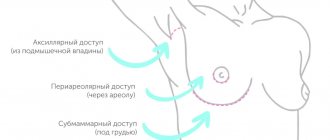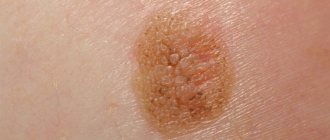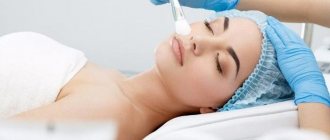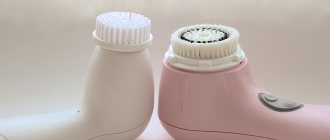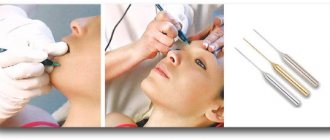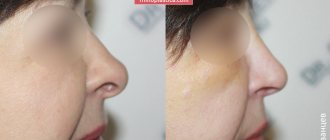Consultation with plastic surgeons with over 20 years of experience – free! Sign up by phone. Waiting for you! Closed rhinoplasty is a technique for plastic surgery of the nose using an endonasal (closed) approach. The fundamental difference between closed rhinoplasty lies in the name itself: all incisions are made exclusively inside the nose.
In an open nose job, the surgeon makes an incision at the base of the columella (the area of skin between the nostrils) and inside each nostril. This method allows you to completely visualize all the structural elements of the nose and carry out even the most complex correction with maximum accuracy. In many cases this is the recommended technique. The incision in the columella area becomes indistinguishable within a few months.
In closed rhinoplasty, the surgeon makes incisions inside the nostrils: thus, there are no visible external incisions to begin with. However, this method of operation is practically not applicable in solving some problems of rhinoplasty.
Closed rhinoplasty is not recommended if a nasal implant is to be installed, as well as in some cases of revision rhinoplasty. Not all surgeons can use closed rhinoplasty: a highly qualified doctor and extensive experience, impeccable knowledge of anatomical structures and the ability to work with minimal visualization of the surgical field are required.
The surgeons at the Mont Blanc Clinic are fluent in all methods of nose surgery. However, the patient’s desire to undergo closed rhinoplasty is feasible only with a positive verdict from the doctor. The doctor evaluates the surgical plan and makes a decision depending on the specific situation.
About the operation
Closed rhinoplasty is a plastic surgery technique in which surgery is performed through an endonasal surgical approach from the nasal cavity.
With the open technique, an additional incision is made on the columella - the bridge between the nostrils, which consists of skin and cartilage tissue.
The operation is performed under endotracheal anesthesia (general anesthesia) or local anesthesia. During general anesthesia, preliminary drug preparation of the patient is carried out - premedication. The average time of surgical intervention is 1.5 hours, including preparation no more than 3 hours. Closed rhinoplasty preserves the integrity of the cartilage and columella. The rehabilitation period of the body is reduced to 3 months; complete healing requires 6 months.
Indications for closed rhinoplasty
The closed method of rhinoplasty is prescribed for aesthetic and medical indications.
Aesthetic ones include:
- asymmetrical arrangement of wings and shape;
- “hump” on the back of the nose;
- parameters - long, wide;
- non-standard nasal passages - narrow or too wide;
- the shape of the tip of the nose is with a bulbous deformation (“potato”), forked, curved.
If aesthetic imperfections cause visual discomfort, then absolute (medical) conditions affect the vital functions of the body. Medical indications include:
- nasal injuries;
- deviated nasal septum;
- deformation of the cartilage and bones of the nose;
- difficulty breathing;
- the formation of polyps in the nasal passages.
Reasons for refusal to perform an operation
Complex deformation of the nasal septum and the special design of the osteochondral tissues do not allow surgical intervention in some cases. If there are absolute contraindications, the plastic surgeon will refuse you rhinoplasty, among them are:
- oncology;
- decompensated diabetes mellitus;
- hemophilia;
- endocrinological and cardiovascular diseases in the stage of decompensation;
- psychiatric disorders;
- age up to 18 years.
Relative contraindications are an indirect reason for refusal to perform an operation. These include:
- acute stage of influenza and ARVI;
- nicotine addiction;
- compensated diabetes mellitus;
- tendency to form keloid scars;
- pregnancy and breastfeeding.
After suffering from colds or cessation of lactation, rhinoplasty is permissible. In other cases, certain preparation and constant medical supervision after plastic surgery are required.
Rhinoplasty and rhinoseptoplasty: what is the difference?
Let's start with an important fact that, like a red thread, runs through the entire medical practice of plastic surgeons - patients with perfectly straight nasal septums are in the absolute minority. Such people, as well as those with an impeccable bite, are extremely rare. Therefore, often when a patient wants to undergo rhinoplasty, during an examination and CT (computed tomography) scan of the sinuses it turns out that he also needs correction of the nasal septum.
Konstantin Aleksandrovich Matveev - Candidate of Medical Sciences, maxillofacial surgeon, plastic surgeon at the Pirogov Clinic
Preparing for surgery
Initial consultation
During the consultation, the plastic surgeon examines the nose and studies its features.
After listening to the patient’s wishes, the doctor performs computer modeling with 3D visualization of the future shape of the nose. Before the operation, clinical and laboratory tests are prescribed:
- hardware diagnostics - ECG, fluorography, radiography;
- blood sampling for general and biochemical analysis, testing for hepatitis, HIV, determination of the Rh factor and coagulogram;
- Analysis of urine.
After a consultation, obtaining the results of laboratory tests and diagnostic studies, the plastic surgeon outlines a surgical plan. The patient is referred to other specialized specialists, including an anesthesiologist and psychologist, if necessary.
Restrictions before correction
Avoid alcohol and medications that affect blood clotting, such as hormonal contraceptives and aspirin. Keep smoking and use of cosmetics to a minimum. Avoid tanning and solariums to reduce the risk of swelling. Replace your glasses with lenses; you cannot use them for 1.5 months. On the appointed day of surgery, it is permissible to eat a light meal.
Rehabilitation
Strict adherence to doctor's instructions:
- Elevation of the head end of the bed during sleep.
- Applying a cold compress for 2 days.
- Do not take alcohol, aspirin, or medications containing salicylates for 2-2.5 weeks.
- Liquid food on the first day.
- Limiting physical activity for 3 months.
- Do not blow your nose or wear glasses for 6 months.
- Avoid direct sunlight and use SPF 20 sunscreen.
- Refrain from hot baths for the first 2 days.
Rehabilitation period
At the end of the nose reshaping operation, the surgeon applies a fixing plaster. It prevents bones from shifting, and the bandage controls swelling and nasal discharge.
The doctor prescribes painkillers for up to 5 days. But when the nasal passages are blocked, the patient breathes through his mouth more often, which creates some discomfort. Headaches may occur due to lack of oxygen or dry mouth. Breathing difficulties persist for up to 2–3 weeks, and sometimes up to 2 months.
In the first week after plastic surgery, the sutures on the columella and at the base of the tip of the nose are treated with antiseptics. To prevent the formation of crusts and mucus while wounds are healing, the nasal cavity is washed with saline solution. On the 7th day, the plaster splint and silicone splints are removed. Swelling may persist for up to 2 weeks.
A month after the operation, signs of surgical intervention disappear. The tissues of the nose are strengthened, and its shape takes on its final form. Performing physical procedures (magnetic and phototherapy, electrophoresis, microcurrent lymphatic drainage) will speed up the rate of recovery. After a year, scar tissue will finally form.
Deterioration and inflammation during recovery and rehabilitation occur when the patient does not act contrary to the advice and prescriptions of the doctor.
Tips from a plastic surgeon for quick rehabilitation
To prevent complications, it is necessary to follow the recommendations of the plastic surgeon.
Undergo therapy to prevent bacterial infection and fungal development, and properly treat sutures. Ointments based on arnica extract, Lyoton 100 (for eyelids), and Troxevasin will help get rid of swelling. And blood thinners (aspirin, ibuprofen) will speed up recovery. Nicotine makes it difficult for oxygen to pass through blood vessels, so temporarily quitting smoking helps wounds heal faster.
Surgeons' recommendations after surgery:
- for the first 2 days, warm drinks and food are required, limit the intake of spicy, too cold and hot foods;
- do not remove the plaster cast, do not let it get wet;
- limit visits to baths, saunas, beaches and solariums.
- sleeping only on your back is allowed for 2 weeks;
- Avoid tilting your head forward and limit physical activity and stress;
- for people with vision problems, it is worth replacing glasses with lenses during the recovery period (6 weeks) to reduce pressure on the bridge of the nose and prevent the appearance of “dents”;
- carry out a preventive examination 2 times a week, and after removing the splint once a month for six months, and a year later, go to the doctor for a follow-up examination.
When will the visible result appear?
The first changes are visible a week after the splint is removed. You can evaluate the new shape of the nose after 2-3 months. The final result will appear in six months, when the nasal tissue is restored.
Open plastic surgery: features of the method
According to patients, the main disadvantage of open rhinoplasty is that after correction, small scars remain on the skin of the caudal parts of the nose. Although postoperative scars are hardly noticeable, and after the completion of the rehabilitation period it is almost impossible to see them, many are confused by the very fact of their presence. This forces patients to look for specialists who are ready to perform the correction in a closed way.
For a plastic surgeon, minimizing or completely eliminating visible scars on the skin is also of no small importance, but other features of the technique come to the fore for a specialist. Open rhinoplasty is associated with damage to the columella, and this is a very significant disadvantage, not only in terms of scar formation, but also from the point of view of the long-term aesthetic consequences of surgery.
Why is damage to the thin skin bridge between the nasal passages important? The columella performs important functions. Inside this anatomical formation there are blood vessels - arteries, veins - through which nutrients and oxygen flow to the distal parts of the tip of the nose.
Columellar arteries are responsible for tissue trophism, and therefore their preservation during plastic surgery affects the dynamics of the recovery period. Columellar veins drain venous blood. Their damage is fraught with deterioration of drainage function and increased congestion, which is manifested by greater severity and persistence of swelling of the tip of the nose after surgery.
The second aspect is related to the fact that the columella performs a supporting function. This is a kind of “support” that holds the tip in the correct anatomical position. During open surgery, the supporting function of the columella may be impaired, which in theory (and in practice) in the long or medium term can lead to an aesthetic complication in the form of tip prolapse.
So, the key disadvantages of open rhinoplasty are as follows:
- The columellar arteries are damaged, which worsens the dynamics of the recovery period and increases the severity and duration of edema.
- The supporting function of the columella deteriorates, resulting in a risk of aesthetic complications in the form of tip prolapse.
- Small scars remain on the skin.
The open method also has advantages. The key is that a continuous and extended (relatively extended) incision allows the surgeon to fully open the surgical field and gain good access to the anatomical structures of the nasal skeleton. When complex manipulations on deep elements are necessary, a good overview of the surgical field plays a decisive role. It is very important during secondary or reconstructive correction after a severe fracture, and therefore such interventions are almost always performed in an open manner.
Differences between closed and open rhinoplasty
When choosing a method of performing rhinoplasty, the doctor does not focus on any one; the differences between them are insignificant. Only a surgeon can visually understand whether rhinoplasty was performed using an open or closed method. Both methods are aimed at correcting the nose and septum. When undergoing surgery for medical reasons, for example, septoplasty, the result of correcting the septum is the same - normal respiratory function is restored.
Closed and open rhinoplasty methods injure the mucous membrane of the nasal passages in the same way. During the operation, an incision is made in soft tissues enveloped in a network of blood vessels and capillaries, so swelling cannot be avoided. The development of hematomas and bruises depends on the accuracy of the surgeon and anesthesiologist when performing osteotomy. Healing proceeds faster only with the individual characteristics of the body.
Which method do I choose?
Today, in my practice, endonasal rhinoplasty takes precedence. I have been practicing plastic surgery for more than 12 years – years of continuous work and study in this complex area of aesthetic medicine. It is the long-term continuous process of mastering the skill of a rhinosurgeon that allows me to feel confident and offer patients the low-traumatic technique they so desire.
But there are a number of situations when I will make my choice in favor of open surgery:
- revision rhinoplasty
- patient's history of serious trauma
- reconstruction of the nasal dorsum or cartilage
- work with deep sections of the septum
This is dictated by the need to expose as many elements of the nose as possible and to carry out correction on tissues with existing scar changes, which is considered additional difficulties in surgery.
⇒ INFORMATION: Medical indications for correcting the shape of the nose
Piezo rhinoplasty
Modern rhinoplasty is moving towards minimally invasive surgical interventions. This is an endoscopic technique for performing operations and a new technique for cutting bone tissue using piezo-ultrasound waves (piezo knife or piezo apparatus). Ultrasonic cavitation during operation of the device provides another big advantage in the form of hemostasis and asepsis.
“Modern models of piezo knives are equipped with navigation systems; the surgeon sees on the monitor where the tip of the knife is located. This is a great achievement in modern medicine. 35 years ago, when I started doing rhinoplasty (closed technology), my eyes were my fingertips. Traditional osteotomy, where the main tool is a chisel and a hammer, is becoming a thing of history; it has been replaced by a piezo knife, which allows you to cut the nasal bone tissue with high precision. The surrounding tissues (vessels, nerves) remain undamaged, as a result, patients after rhinoplasty have less swelling and the rehabilitation period is reduced. Long-term hospitalization in the clinic is not required, 1 day is enough, previously all patients after rhinoplasty stayed in the clinic for about 10-14 days.”
